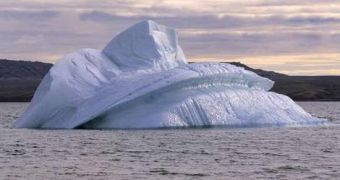During an expedition in the Chukchi Sea, a marginal area of the Arctic Ocean, NASA researchers were taken aback by an unexpected discovery: the icy waters of the Arctic are now home to countless phytoplankton specimens, which up until now had to businesses there.
Although the main goal of the expedition was that of looking into how climate change affects this particular region of the world, it seems that nobody was prepared for such staggering news.
One of the biologists involved in this researched explained that: “This is like finding the Amazon rainforest in the middle of the Mojave Desert.”
The explanation for this phenomenon seems to be rather simple: in order to develop and reproduce, phytoplankton requires both a nutrient-rich environment and sunlight.
When the Arctic region was mostly covered in thick sea ice, these micro-organism simply lacked sufficient light and therefore their population was well kept under control.
Once the Arctic sea ice began to melt as a result of global warming, the phytoplankton no longer had any notable barrier standing between it and the sun. Moreover, thin ice can act as a magnifying glass, focusing light.
Therefore, it can be argued that the phytoplankton there had the best of conditions to go on a reproducing “spree.”
Preliminary reports, discussed by Mongabay, speak about a 100 km (62 miles) long area under the Arctic ice where there are four times more such micro-organisms than in other nearby waters.
NASA representatives explain that similar discoveries are quite likely to be made ever more often in the future, as long as the melting of the Arctic ice continues to occur at its present rhythm.
The good news is that phytoplankton apparently plays a very important role in cloistering carbon dioxide, so all in all, with their help, Arctic ecosystems could end up absorbing more carbon than they already do.

 14 DAY TRIAL //
14 DAY TRIAL //